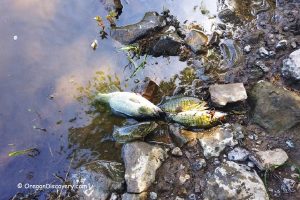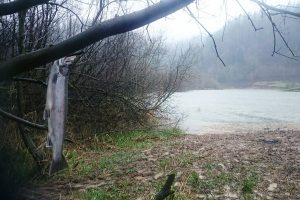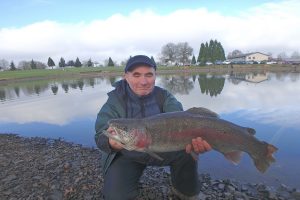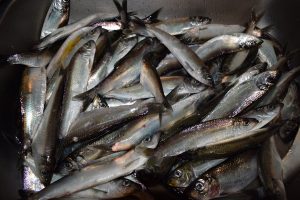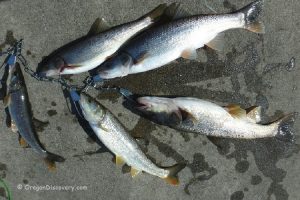
• Smelt dipping events are quite popular on the West and East Coasts
The Pacific Smelt, also known as Eulachon is a small silver fish that migrates from the ocean to freshwater rivers to spawn between late winter and early spring.
The greatest populations of smelt are found in the northern coastal waters of the Pacific Ocean, particularly along Alaska's coast, the mouth of the Nushagak River, the Pribilof Islands in the Bering Sea, and the Klamath River in Northern California. In Oregon and Washington, the tributaries of the Columbia River carry the largest numbers of smelt.
Although much about the smelt's migration patterns remains a mystery, these fish travel up to 20 miles (32 km) upstream to reach their spawning grounds. It is still unclear why some rivers see larger smelt populations than others.
Smelt is prized not only for its abundant nutritional benefits but also for its historical availability. This fish is rich in protein, omega-3 and omega-6 fatty acids, and a variety of essential vitamins and minerals, including vitamins A and B, potassium, iron, calcium, magnesium, zinc, and phosphorus. Additionally, smelt is considered less likely to accumulate harmful toxins, such as mercury, making it a safer option for consumption compared to some other fish species.
Smelt fishing, or "dipping," is relatively simple and doesn't require a fishing rod. Instead, a dip net is used, and recreational fishing is typically allowed from the river banks. However, due to the declining population of smelt, the Washington Department of Fish and Wildlife (WDFW) and the Oregon Department of Fish and Wildlife (ODFW) have implemented regulations. These guidelines can be found on their respective websites.
Video
Brief History
Dating back to 1806, the journals maintained by Captain Lewis and William Clark contain recollections of the various tributaries of the Columbia River, and the river itself being flooded with smelt ready to spawn. The claims have been corroborated by old residents of the area.
Due to the heavy population of smelt, the activity of fishing smelt was an important recreational activity which would often turn into a social event. The period from the 1930’s to the 1950’s, the the 'catch of the smelt’ event became an annual social gathering tradition.
Endangered Smelt
From the 1980s to the 1990s, the population of smelt, along with other spawning fish like salmon, experienced a rapid decline. According to the National Oceanic and Atmospheric Administration (NOAA), between 1945 and 2009, the smelt population plummeted from approximately 62 million to just around 200,000. This drastic reduction has led to the classification of smelt as an endangered species.
In response to this alarming decline, both the Oregon and Washington state governments imposed a ban on smelt fishing in 2010 to protect the remaining population and allow for recovery.

The exact causes behind the dramatic decline in smelt populations remain unclear. However, scientists attribute the decrease to several factors, including rising water temperatures, dam construction, pollution, unregulated fishing, changes in predator-prey dynamics, and narrowing stream channels.
Additionally, smelt primarily feed on oceanic plankton, whose numbers have also declined significantly. In response, predators like sea lions and seals have moved to the Columbia River to prey on smelt and salmon, further impacting their populations.
By 2014, smelt numbers began to show signs of recovery. That year, the state of Washington reintroduced smelt dipping along the Cowlitz River, allowing fishing on the first two Saturdays in February, marking the start and end of the season. Similarly, Oregon permitted dipping on the first two Saturdays in March along the Sandy River. The fishing hours were set from 6 a.m. to 12 p.m., with a maximum catch limit of 10 pounds per person. However, by 2016, smelt dipping was allowed for only one day, reflecting ongoing efforts to manage the species’ recovery.
You May Also Like


